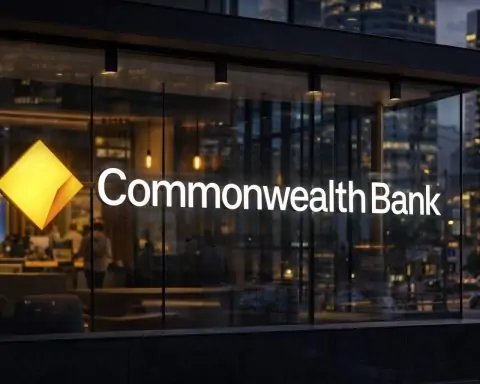- Roller-Coaster Stock Surge: Opendoor Technologies (NASDAQ: OPEN) saw its shares rocket from under $1 to over $10 in 2025 – a ~1,600% jump fueled by retail “meme stock” hype – before cooling back to around $7 by late October [1]. The stock is still up roughly +350–450% year-to-date, even after a ~20–30% pullback from its September peak [2].
- New Leadership & Turnaround Plans: In September, Opendoor appointed Kaz Nejatian (a former Shopify executive) as its new CEO, while co-founder Keith Rabois returned as Board Chairman [3]. The shake-up sparked optimism – the stock jumped ~80% on the announcement day – and the team is pursuing an “AI-first, agent-led” strategy while aggressively cutting costs. Rabois has publicly blasted the firm as “bloated” with 1,400 employees and said it could run with “not more than 200” staff [4] [5], signaling plans for up to ~85% layoffs to streamline operations.
- Crypto Buzz Boost: Opendoor grabbed headlines in early October when CEO Nejatian confirmed the company will accept cryptocurrency (like Bitcoin) for home purchases. His simple tweet – “We will… just need to prioritize it” – sent OPEN stock up 14% in one day to $9.28 on Oct. 6 [6]. The crypto-payment plan is meant to modernize homebuying and appeal to new tech-savvy customers, though it’s still in the works.
- Mixed Financials: The company notched $1.6 billion in revenue for Q2 2025 (up 5% year-over-year) and its first positive adjusted EBITDA since 2022 [7] – a sign of improvement. However, Opendoor remains unprofitable on a net basis, and management warned that Q3 revenue will plunge ~50% YoY (guiding to just $800–875 million) with another loss expected [8]. Wall Street consensus likewise sees Q3 sales around $882 million (−36% YoY) and continued red ink [9].
- Housing Market Headwinds:High mortgage rates and a housing slowdown pose major challenges. Recent data showed an unprecedented glut of sellers – ~490,000 more home sellers than buyers in the U.S. – which has made it harder for Opendoor to flip houses quickly [10]. Rival platforms Zillow and Redfin already shut down their iBuyer home-flipping divisions in 2021–22 after heavy losses, leaving Opendoor as the last major iBuying player standing [11].
- Wall Street Skepticism: Despite this year’s rally, most analysts remain bearish on OPEN. The average 12-month price target is only around $1–$2 (implying a huge downside from current levels) and the consensus rating is “Sell” or “Reduce” [12] [13]. One hedge fund manager even lambasted Opendoor as “total garbage” – arguing the meme-driven surge ignores the company’s grim fundamentals [14]. Short interest is elevated (~20–25% of the float), reflecting many traders betting against the stock [15].
- Bulls’ Case: Opendoor’s fans counter that the company could be a long-term winner if it weathers the storm. They note Opendoor has averaged ~43% revenue growth (CAGR) and now trades near 1× sales, which could signal big upside if the housing cycle turns and the firm’s tech-driven model gains traction [16]. With a lighter cost structure and innovations like AI pricing tools, crypto payments, and even “try-before-you-buy” home trials, bulls see Opendoor reinventing real estate and eventually returning to profitability.
From Penny Stock to Meme Superstar: A Wild 2025 Ride
Opendoor’s stock journey in 2025 has been nothing short of astonishing. The San Francisco-based real estate tech firm – known for its online home-buying and flipping platform – started the year trading for pennies amid deep losses. But by mid-September, OPEN shares had skyrocketed to over $10, bolstered by frenzied retail trading and social media hype. In the span of about three months, the stock leapt roughly 1,600% off its June lows [17], transforming Opendoor into a buzzy “meme stock” sensation featured on Reddit and X (Twitter). This dramatic rally gave Opendoor a multibillion-dollar market cap and a new lease on life – truly a comeback from the brink of being a sub-$1 delisting candidate.
However, the euphoria has since cooled. As of late October, Opendoor has given up about 20–30% from its peak, with shares hovering in the mid-$6 to $7 range [18]. On October 23, OPEN closed around $7.03, and even after a brief uptick, it remains far below its highs [19] [20]. The pullback reflects just how volatile this stock is – 20%+ swings have become routine. Trading volumes, which soared into the hundreds of millions of shares during the craze, have lately begun to decline [21]. For a meme stock reliant on Reddit-fueled momentum, fading volume can be a warning sign that the retail fervor is easing. In fact, the stock’s recent dip has prompted observers to ask whether this is merely a technical breather or a top after an overshoot. As one market commentary put it, investors are now debating if the retreat “is a short-term technical correction, or a sign that the stock has peaked” [22].
Several developments have whipsawed the stock in recent weeks. In mid-September, Opendoor’s management shake-up (detailed below) ignited optimism and a massive price spike. Not long after, a filing revealed that quant trading firm Jane Street had accumulated a ~5.9% stake in Opendoor [23], lending some institutional credence to the rally. But around the same time, insiders appeared less optimistic – major shareholder Access Industries (an investment firm led by Len Blavatnik) unloaded about 11.4 million shares (roughly $95 million worth) in early October [24]. That was the second large sale by Access in a year, and it signaled to the market that even one of Opendoor’s biggest backers was cashing out after the huge run-up. This mix of upbeat and negative signals has added to the stock’s turbulence. It’s a classic meme-stock roller coaster, with rapid climbs followed by steep descents as sentiment swings. As of now, Opendoor’s 52-week trading range spans from about $0.50 to $10.87 [25] – a testament to just how wild the ride has been for investors.
New CEO at the Helm – Hype Meets a Bold Turnaround Gambit
A key catalyst behind Opendoor’s recent rally was a dramatic leadership shake-up aimed at reviving the struggling company. In mid-September, Opendoor announced that Kaz Nejatian, formerly a top executive at Shopify, would take over as CEO, replacing Carrie Wheeler (who had been CEO since early 2022). At the same time, co-founder Keith Rabois returned to the company as Chairman of the Board, and fellow co-founder Eric Wu also rejoined the board [26]. This “back to the future” move essentially put Opendoor’s founding visionaries back in charge alongside a fresh tech-savvy leader.
The market greeted the news with euphoria – Opendoor’s stock exploded nearly 80% in one day on the leadership announcement [27]. Investors, especially on social media, embraced the narrative that a “founder mode” pivot was underway and that the new CEO’s tech pedigree could reboot Opendoor’s fortunes. Activist investor Eric Jackson (who helped spark the meme rally over the summer) championed the shake-up, openly praising Chairman Rabois as “the smartest person in tech” [28]. In other words, the bulls believed that Opendoor now had the right team and vision to pull off a comeback.
Nejatian and Rabois wasted no time outlining an ambitious turnaround plan. They have preached a vision of making Opendoor an “AI-first, agent-led” real estate platform rather than just a home flipper [29]. In practical terms, this means leveraging algorithms and machine learning for smarter home pricing and automation, while partnering with local real estate agents instead of competing with them. Opendoor wants to open its platform to outside agents (sharing commissions) to expand its reach and offload homes faster – a major strategic pivot from its original disruptor stance [30] [31]. The goal is to evolve toward a marketplace model that is more capital-light, rather than Opendoor itself owning a huge inventory of houses at all times.
At the same time, the new regime is enacting drastic cost cuts to stanch the bleeding. Opendoor had roughly 1,400 employees, and Rabois bluntly asserted on CNBC that “we don’t need more than 200 of them” [32]. He quipped that he didn’t even know what most of those 1,400 people do – underscoring a view that the company had become inefficient and overstaffed. Indeed, management signaled plans to slash up to ~85% of the workforce to create a leaner operation focused on automation and efficiency [33] [34]. Rabois and other insiders even put in about $40 million of their own capital to bolster the company and fund the restructuring [35]. The message was clear: Opendoor is going into “start-up mode” – trimming down to a nimble core and rebuilding itself with an emphasis on tech and profitability over raw growth.
“There’s 1,400 employees at Opendoor. I don’t know what most of them do. We don’t need more than 200.” – Opendoor co-founder and Chairman Keith Rabois, vowing to run a leaner operation [36]
The leadership change and cost-cutting gambit have, so far, impressed the market enough to fuel speculative interest in the stock. It’s given bulls a hopeful narrative (a savvy tech CEO from outside, plus the original visionaries back on board) to justify the massive rally. However, actually executing this turnaround is the hard part that lies ahead. Nejatian only took the helm in September, and implementing AI systems or new agent partnerships – and making them pay off financially – will take time. As analysts have noted, Opendoor was trading at $0.50 for a reason, and “the speculative rally hasn’t solved the company’s core issues” [37]. Those core issues include how to consistently flip homes for profit (especially in a down market) and how to manage risk so that one housing downturn doesn’t wipe out the company. These challenges remain formidable, and now it’s up to the new CEO and team to prove that the bold plan can translate into real results.
Crypto, “Home Test Drives” and Other Bold Moves to Spur Demand
Amid its quest to reboot the business, Opendoor has rolled out some eye-catching product innovations to spark buyer interest – almost as if trying to inject a Silicon Valley-esque flair into the staid housing market. The most attention-grabbing move came in early October, when CEO Kaz Nejatian confirmed that Opendoor plans to accept cryptocurrency as payment for homes. This idea surfaced when a user on social media (X/Twitter) asked if they could buy a house with crypto, and Nejatian replied: “We will. Just need to prioritize it.” That brief confirmation set off a mini-frenzy, as the notion of purchasing real estate with Bitcoin or other crypto was novel enough to send Opendoor’s stock up about 14.4% in a single day [38]. By embracing crypto, Opendoor signaled it’s willing to think outside the box to attract a new breed of buyers (for example, tech-savvy millennials or international investors holding digital assets). If implemented, Opendoor would be among the first real estate platforms to directly accept crypto for home sales, potentially giving it an edge as a fintech innovator. Of course, many details remain (which cryptocurrencies to accept, how to manage price volatility, regulatory questions), and no firm timeline was given. But the mere announcement boosted Opendoor’s profile as a forward-thinking company at a time when it needs every bit of positive buzz it can get.
Opendoor is also experimenting with novel ways to lower buyers’ fears in a tough housing market. One creative pilot launched this October is a “7-Day Home Test Drive” program in Texas, allowing buyers to move into an Opendoor-listed home and live in it for up to a week with the option to cancel the purchase if they aren’t satisfied [39]. In essence, Opendoor is offering a “try-before-you-buy” option for houses – something practically unheard of in traditional real estate. They even threw in a 100-day warranty on major appliances and systems for extra reassurance [40]. By giving nervous buyers an escape hatch, Opendoor hopes to overcome purchase anxiety and make its homes more appealing than typical listings. It’s a gutsy strategy (after all, a returned house could mean added costs), but it addresses a real consumer pain point and could help Opendoor sell homes faster in a slow market. These kinds of perks mimic the flexibility of e-commerce for big-ticket property transactions, showing how Opendoor’s tech/startup DNA is driving it to rewrite the real estate playbook.
Whether it’s crypto payments or home “test drives”, these initiatives underscore Opendoor’s determination to reignite growth and differentiate itself. In a stagnant housing environment, the company is essentially throwing spaghetti at the wall to see what might stick in attracting buyers. It’s too early to know if any of these bets will meaningfully boost sales – and they come with their own risks – but they do generate buzz and reinforce Opendoor’s image as a real estate innovator. At minimum, such moves have kept Opendoor in the conversation (and in headlines) as it navigates a very challenging period. For investors, however, the question is whether these headline-grabbing ideas can translate into improved financial performance or are just temporary sugar highs (much like the crypto tweet bump that faded). The real proof will be in upcoming quarters as we see if these efforts move the needle on selling more homes or improving margins.
Flipping Houses in a Storm: Fundamental Challenges and Competition
Behind the meme-stock hype and flashy innovations, Opendoor still faces a harsh business reality: its core model of iBuying – essentially high-tech house flipping – remains inherently risky and low-margin. The company’s basic practice is to purchase homes outright, hold them for a short period, and then resell them, aiming to make a small spread (after renovating or improving the home if needed). This model can work brilliantly in a rising housing market – as seen in 2021’s boom – but it becomes extremely tough when the market turns cold. Opendoor must continuously carry a large inventory of homes (tying up capital and incurring costs like financing, taxes and maintenance) and try to sell them quickly. If homes sit too long or prices fall, profits evaporate and losses mount.
Unfortunately for Opendoor, the past year has been one of the toughest housing markets in over a decade. Mortgage rates have spiked to levels not seen since the mid-2000s, which has dramatically cooled buyer demand. Even though new home sales saw a surprise jump last summer [41], the overall trend is that many buyers are priced out or waiting on the sidelines due to high borrowing costs. Housing affordability is at a breaking point – median U.S. home prices have jumped ~44% since 2015 (to around $417k) while interest rates are high, creating a squeeze for consumers [42]. The result is far fewer qualified buyers in the market, especially for move-up homes that Opendoor often deals in. According to Redfin data, as of spring 2025 there were roughly 500,000 more home sellers than buyers nationwide – an imbalance never seen before [43]. In practice, that means a lot of listed homes (including Opendoor’s inventory) are sitting unsold for longer, forcing price cuts and eroding margins.
Indeed, Opendoor’s own metrics reflect this strain. A recent analysis found that about 36% of Opendoor’s homes were sitting on the market for over 120 days (four months) without selling [44]. For a company trying to “flip” houses rapidly, that kind of backlog is brutal – as one observer wryly noted, “that’s not disruption, it’s depreciation.” Carrying costs on these homes eat into any potential profit, and the longer a home languishes, the more likely Opendoor will end up selling it at a loss. The company has responded by dramatically scaling back its home purchases in recent quarters – essentially hoarding less inventory. In Q2 2025, Opendoor sold 4,299 homes but purchased only 1,757 new ones (a 63% drop in acquisition volume) [45]. This shows management hitting the brakes to avoid holding too many unsold houses, even if it means shrinking revenue in the short term. It’s a balancing act between staying in the market versus not getting overextended with assets that could turn into hot potatoes.
Opendoor’s struggles are not unique – its competitors have learned hard lessons too. Zillow Group, the online real estate giant, tried to run its own iBuying program earlier in the decade, only to suffer staggering losses and shut it down in 2021 after the algorithmic pricing model backfired [46]. Zillow’s exit was a cautionary tale that even with mountains of data, flipping homes at scale can be much riskier than it appears. Likewise, brokerage Redfin launched an iBuyer arm but pulled the plug in 2022, concluding the model was too volatile when housing conditions turn south [47]. “Zillow and Redfin both abandoned iBuying” for good reason, notes one analysis – they found it simply too risky once the market cooled [48]. That context leaves Opendoor as the last major public iBuyer standing [49]. (A few smaller private startups like Offerpad and Knock are in the space, but none at Opendoor’s scale or with its public market exposure.) In some sense, Opendoor now has the iBuying battlefield to itself – which could be a blessing or a curse. On one hand, with competitors gone, Opendoor can potentially capture all the demand if the model starts working again in a housing rebound. On the other hand, the fact that its peers bailed out underscores how daunting the economics of this business are. As one Seeking Alpha analyst skeptically described, Opendoor is basically “house flipping wrapped in tech marketing” – a traditional low-margin flipping business dressed up with an app [50]. The challenge for Opendoor is to prove that its tech and scale can overcome the inherent margin pressures that drove others out.
For now, Opendoor’s fundamentals remain shaky. The company has posted net losses for four consecutive quarters, and its gross margins on home sales are typically in the single digits [51]. That leaves very little room for error – any slight decline in home values or surprise expense can turn a flip into a money-loser. Opendoor’s rapid growth phase also left it with a high cost base that is tough to sustain; hence the new management’s intense focus on cutting overhead. Even after the recent pullback in share price, the market is still valuing Opendoor at roughly $5 billion+ in market capitalization [52]. That’s a hefty premium on a company that, by traditional metrics, hasn’t proven it can make money consistently. In a climate of rising interest rates and economic uncertainty, investors have become much more cautious about richly valued, unprofitable tech plays – and Opendoor fits that profile. As one analysis warned, “extreme caution is warranted” at this juncture; the stock’s massive year-to-date gains and lack of a clear profit path mean the risks likely outweigh the rewards for now [53]. In blunt terms, some skeptics argue Opendoor’s recent dip from $10 to $7 isn’t a true “bargain” but rather a “cheap illusion” given the company’s challenges [54].
“The fundamental problem is that its fundamentals cannot support its current valuation.” – NAI Financial Insight, noting Opendoor’s steep losses and thin margins [55]
All that said, Opendoor’s management and bulls would contend this is a transitional period – that the company can adapt and survive where others failed. By pivoting to a more capital-light approach (using partner agents, offloading inventory faster, and introducing new revenue streams like mortgages, warranties, etc.), Opendoor hopes to eventually make the model work even in a moderate market. The next few quarters will be critical in demonstrating whether Opendoor can stabilize its business in the current housing environment or whether further pain is ahead.
Market Outlook: Can a Housing Rebound or Tech Edge Save OPEN?
Looking forward, the fate of Opendoor’s stock will likely hinge on two big factors: macro housing conditions and the company’s execution on its new strategy. On the first front, there is some guarded optimism that the U.S. housing market may be nearing a bottom after a prolonged slump. Many economists predict that by 2024–2025, mortgage rates will gradually ease as the Federal Reserve’s tightening cycle ends and rate cuts begin into 2026 [56]. If borrowing costs come down, affordability should improve, potentially unlocking demand from the large cohort of millennials and Gen Z who want to buy homes but have been priced out. There are already signs that homebuilders are feeling a bit more bullish (new home sales data surprised to the upside recently [57]), and a sustained drop in rates could re-energize housing activity in 2026 and beyond. For a company like Opendoor, a housing rebound would “lift all boats” – the easiest fix for its business would be a return to a seller’s market where homes appreciate and move quickly [58]. In such a scenario, today’s $7 share price could in hindsight look like a bargain if Opendoor is able to flip homes at a profit again like it did during 2021’s boom.
Of course, counting on a macro turnaround is risky. There’s no guarantee how fast or far mortgage rates will fall, or if the economy avoids recession in the interim. Any negative shock – such as a renewed spike in interest rates or a broader economic downturn – could further depress housing demand and home prices, which would be a worst-case scenario for Opendoor. This inherent uncertainty is why most analysts are sitting on the sidelines or advising caution on OPEN stock right now. Wall Street sentiment is still skewed bearish: according to MarketBeat, the average analyst target is about $2.21 (with individual 12-month targets ranging from a high of $6 to a low of $0.70), implying roughly −70% downside from current prices [59]. Of the 6 analysts covering the stock, 3 rate it a Sell, 2 say Hold, and only 1 has a Buy rating [60] [61]. In other words, the professional consensus is that Opendoor’s recent rally will not be sustained by fundamentals – at least not as things stand. As one financial writer observed, Opendoor “was trading at 50 cents for a reason,” suggesting the company’s issues run deep and the meme-stock spike hasn’t fixed the underlying problems [62].
That skepticism was vividly illustrated by outspoken investors like George Noble, a hedge fund manager, who blasted Opendoor as “total garbage” on social media [63]. Similarly, some bearish commentators note that Opendoor’s $1,000 investment at its 2020 IPO would be worth only about $500 today – a reminder that early investors are still deep underwater despite 2025’s bounce [64]. These critiques hammer home the point that Opendoor has a long way to go to prove its business model truly works in the long run. Persistent losses, heavy debt, and potential dilution (Opendoor may need to raise more capital if losses continue) all weigh on the stock’s outlook.
On the other hand, the bulls and company insiders see a light at the end of the tunnel. They argue that the extreme pessimism is overdone now that Opendoor is taking the right corrective actions. If Nejatian’s team can drastically improve efficiency – for example, by using AI to better predict prices and avoid overpaying for homes, or by turning over inventory faster – then the unit economics could improve even without a full housing boom. Key metrics to watch will be things like gross profit per home, the average time a home sits on Opendoor’s books, and the conversion rate of offers to completed sales [65]. Early progress is evident: Q2 2025 saw adjusted EBITDA turn positive (a sign of improving operational control) even though the market was still weak [66]. Opendoor also still had around $780–810 million in cash as of mid-2025 to buffer itself [67], which management says is enough runway for a couple of years. The company is diversifying its revenue streams too – offering mortgages, title services, and warranties – which could contribute more to profits over time [68]. All these efforts aim to reduce Opendoor’s dependence on home price appreciation alone and build a more resilient, platform-like business.
In the near term, all eyes are on the upcoming Q3 2025 earnings report, scheduled for November 6. This will be the first full quarter under the new CEO’s belt and a chance for Opendoor to show how it’s handling the rapid changes. Investors will be looking for any hints of stabilization: Did Opendoor manage to sell homes without deep discounting? Is its inventory level under control? How badly did revenue fall, and are losses narrowing at all? If the company delivers results better than the bleak expectations – or even just a less pessimistic outlook for Q4 and early 2026 – it could reignite the stock’s momentum [69]. Notably, any commentary from management about recent trends (e.g. “We’re seeing buyer inquiries tick up in October” or “Our Dallas test-drive pilot is boosting sales”) will be scrutinized as potential green shoots. Conversely, if the earnings reveal larger losses or a cautious tone about Q4, it may validate the bears’ view that the recent rally overshot reality and further downside remains.
Bottom Line: A High-Risk Bet on a Housing Turnaround
Opendoor’s 2025 saga encapsulates the tug-of-war between a bold vision for disrupting real estate and the harsh realities of the housing market. The stock’s wild swings – from penny-stock depths to meme-stock highs – reflect that conflict. In a sense, Opendoor now stands at a crossroads: it has shaken off its darkest days of early 2025, but it hasn’t yet proven it can thrive long-term [70]. The new leadership’s tech-driven, cost-cutting plan offers a plausible path to a sustainable business, if they can execute it and if the housing market cooperates. Those are two big “ifs.” Until we see concrete evidence of profitable growth, OPEN remains a speculative, high-risk play. The coming months will likely remain volatile – any big news or macro changes (from Fed rate moves to housing data) could send the stock surging or plunging in equal measure [71].
For investors and observers, the best course might be to buckle up. Opendoor’s next chapter is about to unfold, and it promises to be anything but boring [72]. Will the company rewrite its story from cautionary tale to comeback kid? Or will 2025’s meme-fueled surge be remembered as a temporary sugar high before the stock returned to earth? The answer will depend on whether Opendoor can deliver on its grand promises – and whether the housing winds start blowing in its favor. In the meantime, Wall Street is unconvinced, and even the company’s own executives acknowledge the need to “do more with less” and fundamentally rethink the model [73] [74]. Opendoor has defied the odds so far this year; the real test is what comes next for the one-time real estate disruptor turned meme-stock phenomenon.
Sources: TechStock² (TS2) financial news and analysis [75] [76] [77] [78] [79] [80] [81], NAI 500 market commentary [82] [83], 24/7 Wall St. [84] [85], MarketBeat consensus data [86] [87], and company filings.
References
1. ts2.tech, 2. ts2.tech, 3. ts2.tech, 4. ts2.tech, 5. ts2.tech, 6. ts2.tech, 7. ts2.tech, 8. ts2.tech, 9. ts2.tech, 10. ts2.tech, 11. ts2.tech, 12. ts2.tech, 13. www.marketbeat.com, 14. 247wallst.com, 15. ts2.tech, 16. ts2.tech, 17. ts2.tech, 18. ts2.tech, 19. www.marketbeat.com, 20. www.marketbeat.com, 21. nai500.com, 22. nai500.com, 23. ts2.tech, 24. 247wallst.com, 25. ts2.tech, 26. ts2.tech, 27. ts2.tech, 28. ts2.tech, 29. ts2.tech, 30. ts2.tech, 31. ts2.tech, 32. ts2.tech, 33. ts2.tech, 34. ts2.tech, 35. ts2.tech, 36. ts2.tech, 37. ts2.tech, 38. ts2.tech, 39. ts2.tech, 40. ts2.tech, 41. 247wallst.com, 42. 247wallst.com, 43. ts2.tech, 44. 247wallst.com, 45. ts2.tech, 46. 247wallst.com, 47. ts2.tech, 48. ts2.tech, 49. ts2.tech, 50. www.marketbeat.com, 51. nai500.com, 52. nai500.com, 53. nai500.com, 54. nai500.com, 55. nai500.com, 56. ts2.tech, 57. 247wallst.com, 58. ts2.tech, 59. www.marketbeat.com, 60. www.marketbeat.com, 61. www.marketbeat.com, 62. ts2.tech, 63. 247wallst.com, 64. 247wallst.com, 65. ts2.tech, 66. ts2.tech, 67. ts2.tech, 68. ts2.tech, 69. ts2.tech, 70. ts2.tech, 71. ts2.tech, 72. ts2.tech, 73. ts2.tech, 74. ts2.tech, 75. ts2.tech, 76. ts2.tech, 77. ts2.tech, 78. ts2.tech, 79. 247wallst.com, 80. nai500.com, 81. ts2.tech, 82. nai500.com, 83. nai500.com, 84. 247wallst.com, 85. 247wallst.com, 86. www.marketbeat.com, 87. www.marketbeat.com










